Happy to see my answer linked! Indeed, connectedComponentsWithStats() and even connectedComponents() are OpenCV 3+ functions, so you can't use them. Instead, the easy thing to do is just use findContours().
You can calculate moments() of each contour, and included in the moments is the area of the contour.
Important note: The OpenCV function findContours() uses 8-way connectivity, not 4-way (i.e. it also checks diagonal connectivity, not just up, down, left, right). If you need 4-way, you'd need to use a different approach. Let me know if that's the case and I can update..
In the spirit of the other post, here's the general approach:
- Binarize your image with the thresholds you're interested in.
- Run
cv2.findContours() to get the contour of each distinct component in the image.
- For each contour, calculate the
cv2.moments() of the contour and keep the maximum area contour (m00 in the dict returned from moments() is the area of the contour).
- Either keep the contour as a list of points if that's what you need, otherwise draw them on a new blank image if you want it as a mask.
I lack creativity today, so you get the cameraman as our example image as you didn't provide one.
import cv2
import numpy as np
img = cv2.imread('cameraman.png', cv2.IMREAD_GRAYSCALE)

Now, let's binarize to get some separated blobs:
bin_img = cv2.inRange(img, 50, 80)

Now let's find the contours.
contours = cv2.findContours(bin_img, cv2.RETR_EXTERNAL, cv2.CHAIN_APPROX_NONE)[0]
# For OpenCV 3+ use:
# contours = cv2.findContours(bin_img, cv2.RETR_EXTERNAL, cv2.CHAIN_APPROX_NONE)[1]
Now for the main bit; looping through the contours and finding the largest one:
max_area = 0
max_contour_index = 0
for i, contour in enumerate(contours):
contour_area = cv2.moments(contour)['m00']
if contour_area > max_area:
max_area = contour_area
max_contour_index = i
So now we have an index max_contour_index of the largest contour by area, so you can access the largest contour directly just by doing contours[max_contour_index]. You could of course just sort the contours list by the contour area and grab the first (or last, depending on sort order). If you want to make a mask of the one component, you can use
cv2.drawContours(new_blank_image, contours, max_contour_index, color=255, thickness=-1)
Note the -1 will fill the contour as opposed to outlining it. Here's an example drawing the contour over the original image:

Looks about right.
All in one function:
def largest_component_mask(bin_img):
"""Finds the largest component in a binary image and returns the component as a mask."""
contours = cv2.findContours(bin_img, cv2.RETR_EXTERNAL, cv2.CHAIN_APPROX_NONE)[0]
# should be [1] if OpenCV 3+
max_area = 0
max_contour_index = 0
for i, contour in enumerate(contours):
contour_area = cv2.moments(contour)['m00']
if contour_area > max_area:
max_area = contour_area
max_contour_index = i
labeled_img = np.zeros(bin_img.shape, dtype=np.uint8)
cv2.drawContours(labeled_img, contours, max_contour_index, color=255, thickness=-1)
return labeled_img


